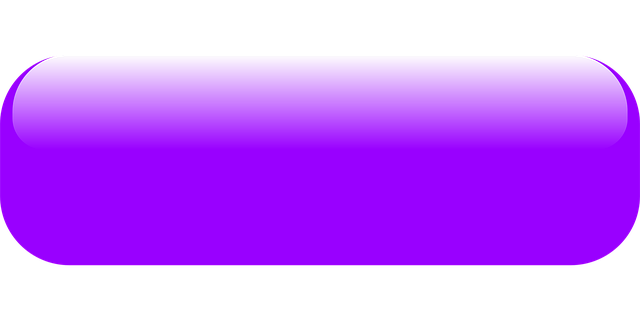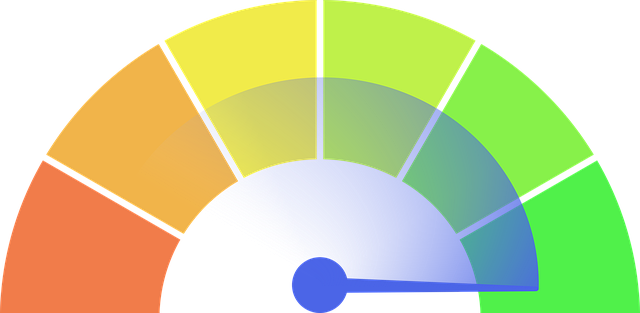Unleash WordPress SEO: Master Internal Links with Top Tools

Internal linking tools optimize WordPress sites by identifying and reconnecting orphaned pages, impr…….
In the digital age, education has evolved beyond traditional classrooms, giving rise to online courses and massive open online courses (MOOCs) that transcend geographical boundaries. To ensure effective learning experiences in this vast digital realm, course internal linking has emerged as a powerful strategy. This article delves into the intricate world of course internal linking, exploring its various facets, impact, and future potential. By understanding how this concept intertwines with global education trends, economic considerations, technology, policies, and real-world applications, we can appreciate its significance in shaping modern learning environments.
Definition: Course internal linking refers to the strategic integration of hyperlinks within online educational content, facilitating navigation between related course modules, resources, or pages. These links enhance the user experience by allowing learners to explore diverse aspects of a subject matter in an organized and interconnected manner.
Core Components:
Hyperlinks: The fundamental building blocks of internal linking, hyperlinks enable direct connections between different parts of a course or website. They are clickable references that take users to specific destinations, such as related lessons, additional resources, or discussion forums.
Course Modules/Pages: These are distinct sections or pages within an online course that cover specific topics or themes. Internal links connect these modules, creating a seamless learning journey for students.
Navigation Menus: Well-designed navigation menus play a crucial role in internal linking by providing users with intuitive access to various course sections and resources.
Historical Context: The concept of internal linking has its roots in the early days of the internet when websites began to evolve from static pages to interactive platforms. As online education gained traction, educators recognized the potential of links to enhance learning experiences. Over time, as MOOCs and online learning platforms proliferated, course internal linking became a critical component of creating structured, engaging, and accessible digital curricula.
Significance:
Improved User Experience: Internal linking allows learners to navigate through complex courses effortlessly, fostering engagement and motivation. It enables students to explore related topics, fill knowledge gaps, and deepen their understanding of the subject matter.
Enhanced Learning Retention: By providing easy access to relevant resources and references, internal links encourage learners to revisit essential information, improving knowledge retention and recall.
Content Organization: Effective internal linking structures courses in a logical manner, making it easier for educators to organize content and for students to follow the course flow.
The influence of course internal linking is not confined to any single region or educational system. Its adoption has been widespread, driven by several key trends:
Global Online Education Growth: The COVID-19 pandemic accelerated the shift towards online learning worldwide. According to a report by WeAreTheCurriculum, global online education market revenue reached $350 billion in 2021, with a projected CAGR of 17.4% from 2022 to 2030. This rapid growth has led to increased demand for user-friendly and well-structured online courses, making internal linking an essential component.
Regional Adoption: North America and Europe have been frontrunners in embracing digital education, with countries like the United States, Canada, and the United Kingdom leading the way. However, Asia Pacific is witnessing significant growth, with governments investing heavily in educational technology. For instance, China’s National Strategy for Developing Digital Education aims to create a comprehensive online learning ecosystem by 2035, driving the need for effective internal linking strategies.
MOOC Popularity: MOOCs have gained immense popularity due to their accessibility and diverse course offerings. Platforms like Coursera, edX, and Udemy host courses from renowned universities and institutions worldwide. Internal linking is critical in these platforms’ success, as it enables learners to navigate through various courses, find complementary resources, and create personalized learning paths.
The economic aspects of course internal linking are multifaceted, impacting both the educational sector and broader economic systems.
Market Dynamics: The online education market is highly competitive, with numerous platforms vying for students’ attention. Effective internal linking can give institutions an edge by enhancing user satisfaction, retention rates, and overall course completion. This leads to increased revenue through student enrollment and higher course completion rates.
Investment Patterns: Educational technology (EdTech) startups have attracted significant investments in recent years. According to a CB Insights report, EdTech venture capital funding reached $18 billion in 2021, a 45% increase from the previous year. Internal linking is an area that appeals to investors due to its potential to improve user experiences and drive business growth.
Economic Impact: The economic impact of internal linking extends beyond individual platforms. Well-structured online courses with seamless internal navigation can contribute to digital literacy, skill development, and workforce readiness. This, in turn, supports national economies by fostering a more skilled and adaptable workforce.
Technology plays a pivotal role in shaping the future of course internal linking, offering both opportunities and challenges:
Artificial Intelligence (AI) and Machine Learning: AI algorithms can analyze learner behavior and preferences to personalize navigation paths, ensuring that users are directed to relevant content. Natural Language Processing (NLP) enables intelligent search capabilities, allowing learners to find related resources using natural language queries.
Adaptive Learning Platforms: These platforms use data analytics to adapt course content and navigation based on individual student needs. By adjusting the difficulty level and providing personalized links to supplementary materials, adaptive learning enhances engagement and learning outcomes.
Virtual Reality (VR) and Augmented Reality (AR): Immersive technologies like VR and AR have the potential to revolutionize online education by creating dynamic, interactive learning environments. Internal linking can be integrated into these experiences, allowing learners to explore virtual classrooms, simulations, or 3D models related to course topics.
Blockchain for Credentialing: Blockchain technology offers secure and transparent ways of verifying academic credentials and certificates. Internally linked digital portfolios and transcripts powered by blockchain ensure data integrity and provide students with a permanent record of their achievements.
The development of course internal linking is influenced and shaped by various policies, regulations, and legislative frameworks worldwide:
Data Privacy Laws: With the increasing collection and processing of learner data, compliance with data privacy regulations like GDPR (General Data Protection Regulation) in Europe, CCPA (California Consumer Privacy Act) in the US, and similar laws globally is essential. These regulations dictate how personal information can be used and shared, impacting the design and implementation of internal linking strategies.
Copyright and Intellectual Property: Educators and content creators must adhere to copyright laws when linking to external resources or third-party content. Proper licensing and attribution are crucial to avoid legal issues and ensure compliance with intellectual property rights.
Accessibility Standards: Making online education accessible to all is a priority for many governments. Web Content Accessibility Guidelines (WCAG) provide standards to ensure that digital content, including linked resources, is usable by individuals with disabilities. Compliance with these guidelines is mandatory in many jurisdictions.
Regulatory Frameworks for EdTech: Several countries have introduced regulations specifically targeting the edtech sector. For instance, China’s Online Education Management Regulations outline requirements for online education providers, including content quality, teacher qualifications, and data protection. These frameworks influence how internal linking is implemented to ensure compliance with regulatory standards.
Despite its numerous benefits, course internal linking faces several challenges and criticisms:
Complexity of Implementation: Setting up a robust internal linking system requires significant technical expertise and resources. Smaller educational institutions or startups may struggle to allocate the necessary budget and personnel for effective implementation.
Content Fragmentation: As courses grow in size and scope, ensuring that all relevant content is properly linked can become challenging. Inconsistent or incomplete internal links may frustrate learners and hinder their ability to navigate the course effectively.
Accessibility Issues: Ensuring accessibility for users with disabilities remains a concern. Improperly implemented internal linking strategies might create barriers for screen readers or keyboard navigation, excluding some learners from full access to course materials.
Solutions and Strategies:
Outsourcing and Collaboration: Institutions can partner with specialized EdTech companies or freelancers to handle internal linking implementation, leveraging their expertise and resources.
Content Management Systems (CMS): Utilizing CMS platforms designed for online courses can simplify the process of adding, editing, and organizing links within course content.
Regular Audits and Maintenance: Conducting periodic audits of internal links ensures their functionality and relevance over time. Regular maintenance is crucial to keep links active and accurate.
Accessibility Testing: Incorporating accessibility testing during development ensures that internal linking complies with WCAG guidelines, making the course accessible to all learners.
Coursera, a leading MOOC platform, has successfully utilized internal linking to create specialized learning paths for students. Their Specializations allow learners to follow a series of related courses, culminating in a certificate of achievement. Internal links connect courses within a specialization, providing a structured and engaging learning experience. This approach has been particularly effective in fields like data science, computer science, and business, where sequential learning is essential.
edX, another prominent MOOC provider, offers MicroMasters programs, which are comprehensive online graduate-level courses. These programs incorporate internal linking to guide students through a series of modules, each focusing on specific topics within the overall curriculum. By providing clear navigation and access to supplementary materials, edX ensures that learners can master complex subjects at their own pace.
The Harvard Business Review (HBR) has implemented a robust internal linking strategy on its online learning platform, ensuring that articles, research papers, and case studies are interconnected. This allows users to explore various topics within business and management, fostering a deep understanding of the subject matter. The HBR’s approach highlights how strategic internal linking can enhance the value of premium educational content.
The future of course internal linking is filled with exciting possibilities as technology continues to evolve and educational trends shift:
Personalized Learning Paths: Advanced AI algorithms will enable even more personalized navigation paths, tailoring learning experiences to individual student needs and preferences.
Immersive Learning Environments: VR and AR technologies will play a significant role in creating dynamic, interactive courses, enhancing engagement and making abstract concepts more tangible.
Micro-Credentials and Badges: As micro-credentials gain recognition, internal linking can be used to showcase digital badges earned for completing specific modules or skills, providing evidence of learning outcomes.
Global Collaboration: With the removal of geographical barriers, online education allows for global collaboration between educators and learners. Internal linking can facilitate cross-cultural exchanges by connecting courses from diverse institutions worldwide.
Adaptive Learning at Scale: Adaptive learning platforms will become more sophisticated, offering personalized content and navigation to large student cohorts while ensuring fairness and inclusivity.
Course internal linking is a powerful tool that has transformed online education, enabling learners to embark on engaging intellectual odysseys within vast digital landscapes. As the global educational landscape continues to evolve, this strategy will remain a cornerstone of effective learning experiences. By embracing technological advancements, addressing policy challenges, and prioritizing user needs, educators and developers can unlock the full potential of internal linking, fostering deeper learning, and shaping a more skilled future generation.
Q: How does course internal linking improve learner engagement?
A: Internal linking provides learners with easy access to related resources, encouraging exploration and curiosity. It creates a sense of connectivity within the course, fostering engagement as students uncover new insights and connections between topics.
Q: Can you provide examples of effective internal linking in online courses?
A: Effective internal linking can be seen in platforms like Coursera and edX, where related courses are grouped into specializations or programs. For instance, a data science course might link to additional modules on machine learning, statistics, and data visualization, allowing learners to build a comprehensive skill set.
Q: What role does AI play in modern internal linking strategies?
A: Artificial Intelligence enhances internal linking by personalizing navigation paths based on learner behavior and preferences. NLP enables intelligent search capabilities, while advanced algorithms can analyze content to suggest relevant links, improving the user experience and learning outcomes.
Q: How can educators ensure that their internal links remain up-to-date?
A: Regular audits and maintenance are crucial. Educators should periodically review and update links to ensure they point to active and relevant resources. Using CMS platforms with version control features can simplify this process, allowing for easy updates and tracking of changes.
Q: Are there any accessibility considerations specific to internal linking?
A: Yes, ensuring accessibility is vital. Internal linking should comply with WCAG guidelines, including proper use of headings, alternative text for images, and keyboard navigation support. Accessibility testing during development ensures that all learners can access and interact with linked content effectively.

Internal linking tools optimize WordPress sites by identifying and reconnecting orphaned pages, impr…….

Managing orphaned pages on WordPress sites through internal linking tools is crucial for SEO. These…….

Orphaned pages, disconnected content on WordPress sites, harm SEO and user experience. Using an orph…….

Internal linking tools maximize WordPress SEO by addressing orphaned pages, improving user experienc…….

Optimizing orphaned pages SEO on WordPress sites through internal linking tools enhances site visibi…….

Orphaned pages SEO plugins identify and fix unlinked content, enhancing WordPress site structure and…….

Identifying and addressing orphaned pages on WordPress sites through internal linking strategies is…….

Orphaned pages, disconnected from site navigation and search engines, harm SEO. Using an orphaned pa…….

Internal linking optimizes WordPress SEO by interconnecting relevant pages, improving user experienc…….

Orphaned pages SEO plugins address isolated content pieces in WordPress sites lacking internal links…….